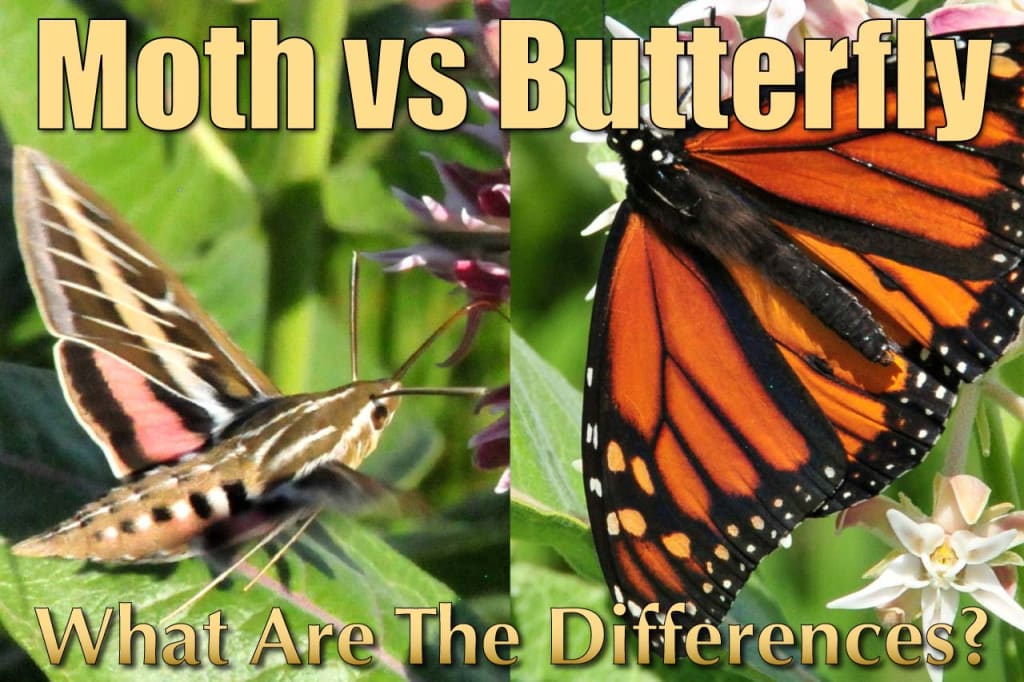Unraveling the World of Butterflies and Moths
Butterflies and Moths

In the quiet solitude of a sunny afternoon, Emily sat in her garden, engrossed in the delicate dance of butterflies and moths that flitted among the vibrant blossoms. As a nature enthusiast and a fervent learner, she had always been captivated by these enchanting insects. Today, however, she had decided to delve deeper into the world of Lepidoptera, determined to understand the intricacies that set butterflies and moths apart.
"You never hear of anybody saying that they've got moths in their stomach," Emily mused aloud, a curious smile on her face. "That sounds like some kind of gastrointestinal problem you should probably be seeking medical attention for."
She giggled at her own observation, realizing how peculiar such a statement would indeed be. Her fascination with these creatures had led her down a path of exploration that even she found amusing.
The warm sun cast a gentle glow over her garden, creating the perfect backdrop for her studies. She took a moment to admire the garden itself, a tapestry of colors and fragrances that lured butterflies and moths alike.
"But why not?" Emily continued her soliloquy, the excitement in her voice growing. "Moths and butterflies are both classified in the order Lepidoptera, but the taxonomic, or naming, differences get pretty confusing, so let's just focus on the morphological differences, or rather, how you can tell them apart by sight."
She reached for her notebook and pen, ready to embark on a journey of discovery.
"One of the easiest ways of telling them apart is by looking at their antennae," Emily explained, her pen moving gracefully across the paper. "Butterflies have antennae that are called 'filiform,' or needle-like. They're long and skinny and they're clubbed or hooked at the end."
Her pen paused briefly as she sketched the intricate details of a butterfly's antenna.
"Moths, on the other hand," she continued, her eyes fixed on the dancing insects, "have feathery antennae."
With swift strokes of her pen, she depicted the delicate fringes of a moth's antenna.
"Despite the differences in shape," Emily noted, "the antennae of both moths and butterflies are used for the same purpose, and that is to detect sexy pheromones from members of the same species."
She couldn't help but chuckle at the thought of these insects communicating through such a sensory language.
"Once the moth or butterfly finds a mate and, uh, they, uh... you know," Emily blushed, her cheeks tinged with embarrassment. "The birds and the bees! No, Stefan. The moths and the butterflies. Anyway, they have sex."
As the words left her mouth, she couldn't help but feel a bit of amusement at the innocence of her own explanation.
"Eggs are laid," she continued, quickly regaining her composure, "and eventually a caterpillar hatches, and it doesn't matter whether or not it's a butterfly or a moth. They're both called caterpillars."
Emily sketched a whimsical caterpillar, its tiny legs gripping a leaf, ready to devour it voraciously.
"After the hungry, hungry caterpillar has eaten all of the things," she narrated, "it will either form a chrysalis or a cocoon."
Emily's pen now danced with grace, illustrating the intricate beauty of these protective encasings. She marveled at the wondrous transformation that occurred within.
"Butterflies form chrysalises," she stated, her voice filled with wonder, "and moths form cocoons, and the easiest way to remember that is that butterflies form chrysalises, and moths form cocoons."
Her notebook bore witness to her newfound knowledge, her sketches bringing the story to life.
"Although these encasings are structurally different," Emily emphasized, "they serve the same function: puberty! To make the transition into adulthood, the body inside of the encasing has to liquify and literally rebuild itself before it's ready to emerge as the beautiful adult that it is."
As she detailed the miraculous process, Emily couldn't help but appreciate the resilience of these creatures.
"In comparison," she chuckled, "acne doesn't seem that bad."
With a deep breath, Emily continued her exploration, describing the differences in resting positions, body shapes, and their unique methods of coping with the challenges of day and night. She sketched, wrote, and reveled in the enchanting world of Lepidoptera.
"Now you can confidently identify these charming Lepidoptera," Emily concluded with a contented smile, "whether you spot them fluttering in your garden or circling your porch light at night."
As the sun began its descent, casting long shadows across the garden, Emily felt a profound sense of connection with these insects. She had unraveled the mysteries of butterflies and moths, and in doing so, she had discovered a world of wonder and fascination that would stay with her forever.
With a final glance at her garden, alive with the delicate beauty of Lepidoptera, Emily closed her notebook and sighed in contentment. The world of butterflies and moths had opened its wings to her, and she was forever enchanted by its secrets.





Comments
There are no comments for this story
Be the first to respond and start the conversation.